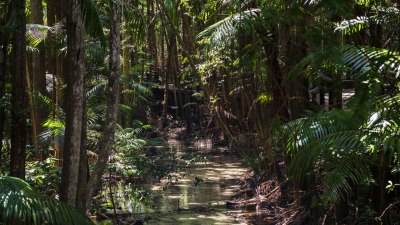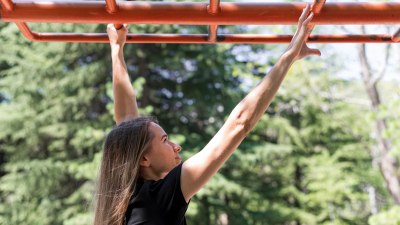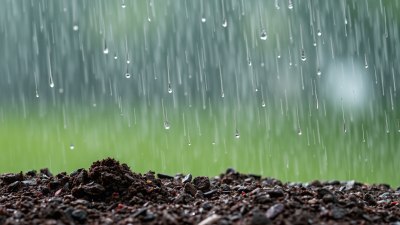Why Do Some Rainstorms Smell Like the Ocean
Discover why some rainstorms carry that distinct ocean scent, exploring science and nature's wonders.

Have you ever stepped outside during a rainstorm and noticed a familiar, refreshing aroma reminiscent of the ocean? Many people experience this peculiar phenomenon, leading to questions about its origins. This intriguing scent arises from various natural processes, creating a unique sensory connection between rainstorms and ocean environments. In this article, we'll delve into the science behind the smell of rain that reminds us of the sea and uncover the factors contributing to this captivating olfactory experience.
The Science of Smell
To understand why some rainstorms smell like the ocean, it's essential to first comprehend the science of smell itself. Our olfactory system detects particles in the air, which are interpreted as scents by our brains. When it rains, various compounds are released into the atmosphere, some of which mimic or directly originate from oceanic environments. The interplay between rain and these compounds can recreate that oceanic aroma we recognize.
Petricor: The Rain Scent
A significant contributor to the smell of rain is a compound known as petricor. This term refers to the earthy scent produced when rain falls on dry soil. Petricor is primarily composed of oils secreted by plants during dry periods and released into the air once rain arrives. This delightful fragrance can invoke memories of nature and is often associated with the freshness brought by a rainstorm. While petricor is not directly related to the oceanic scent, it is a crucial element in the aromatic experience of rain.
Sea Spray and Aerosolized Compounds
The primary cause of that captivating ocean fragrance during certain rainstorms is the interaction with sea spray. Ocean waves crash against the shore, creating aerosols or tiny droplets that contain salt and various organic compounds. These aerosols can be carried by wind and travel considerable distances inland. When rain falls, it can mix with these aerosols, resulting in a smell that closely resembles the freshness of the sea.
Geosmin and Bacteria
Another important factor contributing to the unique scent of rain is the presence of geosmin. This organic compound is produced by certain bacteria found in the soil and is released into the air during rainstorms. Geosmin has a distinctive earthy aroma that can evoke memories of wet soil and fresh rain. In coastal areas, the combination of geosmin and saline particles from ocean spray can create a scent profile that reminds us of the ocean, even when we are far from the shoreline.
Elevation and Wind Patterns
Geographical factors like elevation and wind patterns can also influence the scent of rain. Areas close to the ocean may experience different wind patterns that carry sea spray and marine aerosols further inland, especially during certain weather conditions. Additionally, fragrances can be concentrated in specific areas due to topographical features such as hills or valleys that may trap and amplify the scent of ocean air during rain. This interplay between geography and weather adds an interesting dimension to the olfactory experience during rainstorms.
Temperature and Humidity’s Role
Temperature and humidity are also contributing factors to the scent of rain. Higher humidity levels can enhance our ability to detect scents, making the aroma of rain more pronounced. When temperatures rise before a rainstorm, the increase in humidity can promote the release of compounds from both the soil and oceanic sources. This heightened sensitivity to scents during humid conditions allows us to experience the oceanic aroma more intensely.
Microbial Activity
Microbial activity in the soil also plays a significant role in producing unique scents during rainfall. Certain microorganisms release volatile compounds that can be carried upward into the atmosphere during rainfall. The interaction between these microbial compounds and those from oceanic sources creates a complex scent profile that can remind us of the ocean or coastal climates. This olfactory experience is further enriched by the diversity of the microbial community found in different geographical locations.
Local Flora and Fauna
The vegetation and animal life in a specific region can also contribute to the smell of rain. Some plants emit fragrant oils during rain, adding to the overall aroma of the environment. In coastal regions, these natural scents can combine with the saline notes from ocean winds and sea spray, accentuating the association between rain and the ocean. The essence of local flora can produce a unique signature scent during rainstorms, deeply intertwined with the surrounding ecosystem.
Seasonal Variations
The time of year can also dictate the smell of rain. Spring and summer often bring rainstorms that are more fragrant due to the increased abundance of plant growth and microbial activity. The scent of rain during these seasons might evoke memories of sunny beaches and ocean breezes, creating an emotional link between the weather and the ocean environment. Conversely, rain during the colder months may not carry the same aromas, as less microbial activity and dormant plant life can alter the scent profile.
Psychological Associations
Beyond the physical origins of the smell of rain, psychological associations play a significant role in our perception of this scent. Many individuals have strong memories connected to rain and the ocean, leading to a subjective experience where the scent of rain feels familiar and comforting. These associations may linger in our minds, strengthening the notion that rain smells like the ocean when they indeed have overlapping chemical signatures.
The intriguing connection between certain rainstorms and the scent of the ocean is rooted in complex interactions between natural compounds, weather patterns, and our perceptual experiences. Petricor, sea spray, geosmin, microbial activity, and local flora all contribute to this sensory phenomenon, creating an aromatic tapestry that can transport us to coastal memories. By understanding the science behind the scent of rain, we can appreciate the beauty of nature's aroma and the intricate ways in which our sensory experiences intertwine with the world around us. So the next time you find yourself caught in a rainstorm, take a moment to breathe deeply and embrace the fresh, ocean-like aroma that surrounds you.











